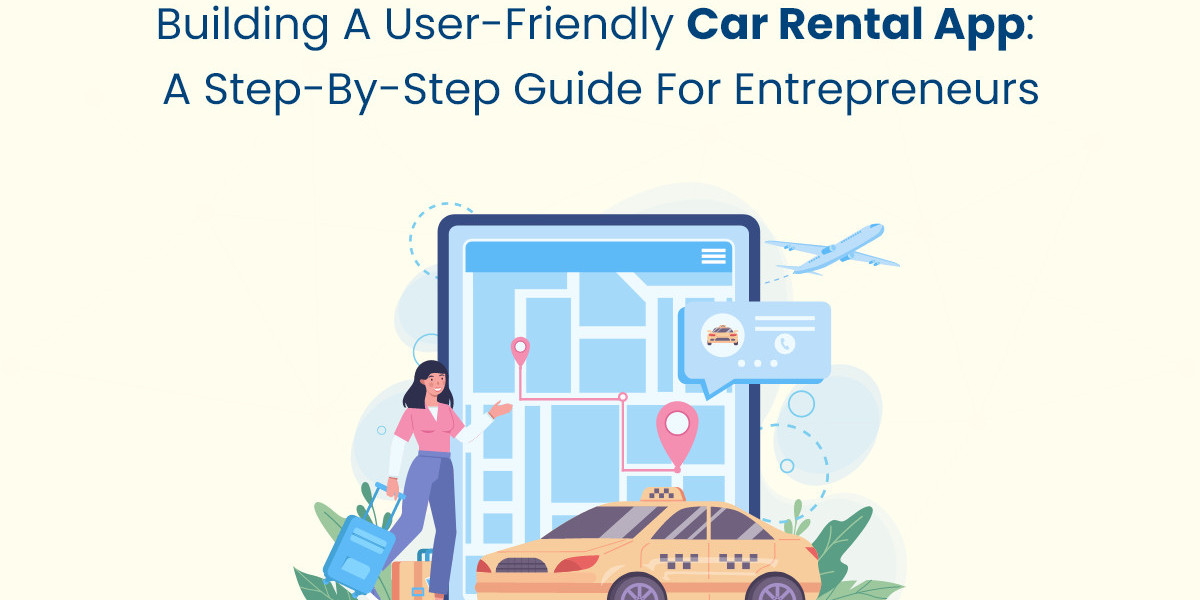The car rental industry has experienced a significant shift with the rise of mobile technology. For entrepreneurs looking to enter this market, creating a user-friendly car rental app is crucial for success. A well-designed app not only attracts users but also enhances their overall experience, leading to higher satisfaction and repeat business. Discover how to create the best car rental apps with our comprehensive step-by-step guide for entrepreneurs. Start building a user-friendly app today! In this step-by-step guide, we’ll explore the essential phases of building a user-friendly car rental app and provide actionable insights for entrepreneurs.
Step 1: Define Your Objectives and Target Audience
Establish Clear Objectives
Before diving into the development process, it’s essential to define the objectives of your car rental app. Determine what you want to achieve with your app, such as increasing rental bookings, expanding your customer base, or offering a unique feature that sets you apart from competitors. Clear objectives will guide your decision-making and ensure that your app aligns with your business goals.
Identify Your Target Audience
Understanding your target audience is crucial for designing an app that meets their needs. Conduct market research to identify your potential users' demographics, preferences, and pain points. Are you targeting business travelers, tourists, or local commuters? Tailoring your app’s features and design to the specific needs of your audience will enhance its usability and effectiveness.
Step 2: Design a User-Friendly Interface
Create an Intuitive Layout
A user-friendly interface is key to a successful car rental app. Design an intuitive layout that allows users to easily navigate through the app and complete their tasks with minimal effort. Use clear labels, straightforward navigation menus, and a clean design to help users find what they need quickly.
Focus on Visual Appeal
The visual appeal of your app plays a significant role in attracting and retaining users. Choose a color scheme, fonts, and images that reflect your brand and create a visually pleasing experience. Ensure that the design elements are consistent throughout the app to maintain a cohesive look and feel.
Simplify the Booking Process
The booking process should be as simple and efficient as possible. Reduce the number of steps required to complete a reservation and provide users with clear instructions. Implement features such as one-click booking and auto-fill forms to streamline the process and minimize user effort.
Step 3: Implement Essential Features
Comprehensive Search and Filtering
A robust search and filtering system is essential for helping users find the right vehicle. Implement a comprehensive search functionality that allows users to search based on criteria such as location, vehicle type, price range, and rental duration. Advanced filtering options can help users refine their choices and find the perfect vehicle more easily.
Real-Time Availability and Booking
Integrate real-time availability and booking features to provide users with up-to-date information on vehicle availability. This ensures that users can make informed decisions and reduces the likelihood of overbooking or missed reservations. Real-time updates also enhance user trust and satisfaction.
Secure Payment Integration
Integrating secure payment solutions is crucial for a smooth and reliable user experience. Offer multiple payment options, such as credit/debit cards, digital wallets, and bank transfers, to accommodate different user preferences. Ensure that your payment gateway is secure and that users' financial information is protected.
GPS Tracking and Navigation
Incorporate GPS tracking and navigation features to enhance the user experience. GPS tracking allows users to locate their rented vehicle easily, while navigation features help them find rental locations, drop-off points, and nearby amenities. These features add convenience and improve the overall functionality of your app.
Step 4: Focus on Performance and Security
Optimize App Performance
Performance optimization is essential for providing a smooth and responsive app experience. Test your app thoroughly to identify and address any performance issues, such as slow loading times or crashes. Optimize your app’s code and use efficient algorithms to ensure that it performs well under various conditions.
Ensure Data Security
Data security is a top priority when handling sensitive information. Implement robust security measures to protect user data and prevent unauthorized access. Use encryption protocols, secure authentication methods, and regular security updates to safeguard users' personal and financial information.
Step 5: Test and Iterate
Conduct User Testing
User testing is a critical phase in the app development process. Gather feedback from real users to identify any usability issues, bugs, or areas for improvement. Conduct both alpha and beta testing to ensure that your app meets user expectations and performs well in different scenarios.
Iterate Based on Feedback
Use the feedback gathered during user testing to make necessary improvements and refinements. Address any issues that users have reported and make adjustments to enhance the app’s functionality and user experience. Iterative development ensures that your app evolves based on user needs and preferences.
Step 6: Launch and Promote Your App
Prepare for Launch
Before launching your app, ensure that it is fully tested and ready for release. Prepare marketing materials, such as promotional content and app store listings, to generate interest and attract users. Plan a launch strategy that includes outreach to potential customers, influencers, and media to maximize visibility.
Monitor and Analyze Performance
After launching your app, continuously monitor its performance using analytics tools. Track key metrics, such as user engagement, conversion rates, and customer feedback, to assess the app’s success and identify areas for improvement. Use this data to make informed decisions and refine your app’s features and functionality.
Conclusion
Building a user-friendly car rental app requires careful planning, thoughtful design, and ongoing refinement. By defining clear objectives, understanding your target audience, and focusing on essential features, you can create an app that meets user needs and stands out in a competitive market.
Learn how to create a user-friendly car rental app with our step-by-step guide for entrepreneurs. Start building your dream app with our expert on-demand app development company today! By following this step-by-step guide, you’ll be well on your way to creating a user-friendly app that enhances customer satisfaction and drives business growth.








